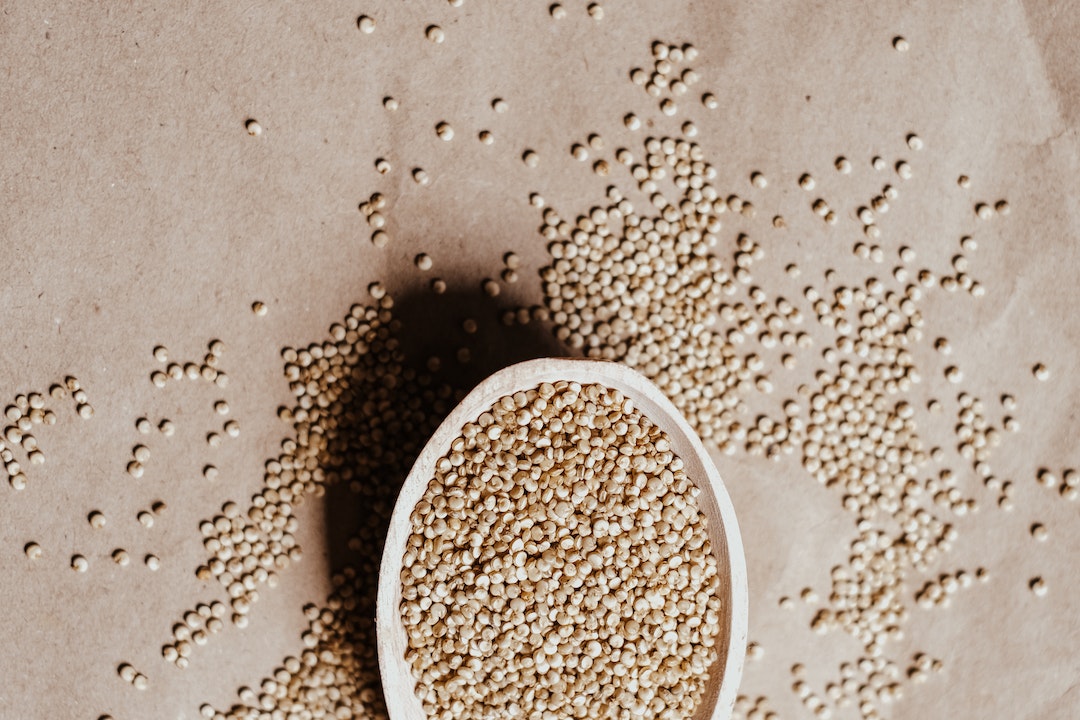Inhaltsverzeichnis
Quinoa ist ein vielseitiges Superfood, das viele Vorteile für eine gesunde Ernährung und den Muskelaufbau mit sich bringt. Es ist wichtig, dass wir unsere Ernährung kontinuierlich überprüfen und eine ausgewogene Ernährung beibehalten, um unseren Körper mit allen notwendigen Nährstoffen zu versorgen. Quinoa bietet eine gesunde Alternative zu den üblichen Lebensmitteln und ist vollgepackt mit Vitaminen, Mineralien und anderen wertvollen Nährstoffen. In diesem Artikel werden wir uns die Vorteile von Quinoa und wie wir es in unserer Ernährung einbauen ansehen.
Was ist Quinoa?
Quinoa ist ein glutenfreies Getreide, das vielfältig zubereitet werden kann. Es hat einen nussigen Geschmack und ist reich an Vitaminen und Mineralstoffen. Quinoa ist eine ideale Wahl, wenn Sie auf der Suche nach einer nährstoffreichen Mahlzeit sind. Es ist auch eine hervorragende Quelle für Kohlenhydrate und Ballaststoffe, die für eine ausgewogene Ernährung wichtig sind. Quinoa ist auch eine hervorragende Proteinquelle und eignet sich daher besonders für Sportler, die auf der Suche nach einer gesunden Proteinquelle sind.
Die Vorteile von Quinoa
Vorteile für die Ernährung
- Reich an Vitaminen und Mineralien
- Reich an Proteinen
- Reich an Ballaststoffen
- Glutenfrei
- Niedriger GI-Wert
Vorteile für den Muskelaufbau
Quinoa ist eine ausgezeichnete Proteinquelle und enthält alle neun essentiellen Aminosäuren. Diese Aminosäuren sind notwendig, um Muskeln aufzubauen und zu erhalten. Quinoa hat auch einen niedrigen glykämischen Index, was bedeutet, dass es langsamer verdaut wird als viele andere Kohlenhydrate. Dies bedeutet, dass es länger dauert, bis Sie sich satt fühlen und Sie länger gesättigt bleiben.
Quinoa in Ihrer Ernährung einbauen
Es gibt viele Möglichkeiten, Quinoa in Ihre Ernährung zu integrieren. Hier sind einige Tipps, wie Sie Quinoa einbauen können:
| Tipp | Beschreibung |
|---|---|
| Müsli | Fügen Sie Quinoa zu Ihrem Morgenmüsli hinzu, um Ihren Energielevel den ganzen Tag über zu erhöhen. |
| Salat | Fügen Sie Quinoa zu Ihrem Salat hinzu, um eine gesunde Proteinquelle hinzuzufügen. |
| Snacks | Quinoa-Chips sind eine gesunde Alternative zu herkömmlichen Chips. |
Quinoa kann auch als Beilage zu einer gesunden Mahlzeit hinzugefügt werden. Es ist auch eine gute Wahl für Vegetarier und Veganer, da es eine hervorragende Proteinquelle ist.
Fazit
Quinoa ist ein vielseitiges Superfood, das viele Vorteile für eine gesunde Ernährung und den Muskelaufbau bietet. Es ist reich an Vitaminen und Mineralien, glutenfrei und eine hervorragende Proteinquelle. Quinoa kann in verschiedenen Mahlzeiten eingebaut werden und eignet sich sowohl für Vegetarier als auch Veganer. Wie der Ernährungsexperte Dave Asprey sagt: „Wenn es um Ernährung geht, ist Quinoa ein Muss.“ Quinoa ist die perfekte Wahl für Menschen, die nach einer gesunden Ernährung und Muskelaufbau suchen.








